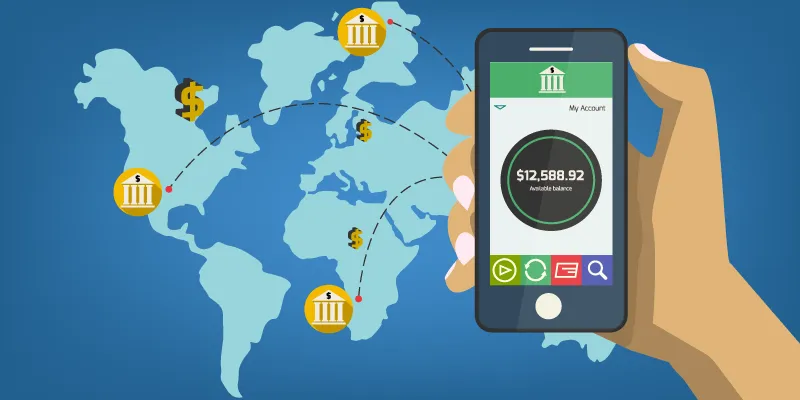A smooth initiation: how fintech walked the tightrope between tech and tradition
The synergy among traditional players, fintech startups and consumers has been the fundamental reason for the fintech puzzle to have so quickly fallen into place.
Accompanying his father to the bank one day, 19-year-old Saksham was taken aback by the long queues and incessant patience with which people waited. Words like ‘applications’, ‘slips’, ‘rejected’ and ‘come again tomorrow with proper documents’ flew around at random. Despite the best effort on part of the bank representatives, the work only progressed at snail’s pace. When finally leaving the bank, he was thankful that his generation, having grown up with mobile devices, was fortunate enough to carry out these transactions with the ease and élan of a click.

The push-and-pull crossing the threshold through technology
The rise of the internet caused a disruption in every industry with its far-reaching consequences. Considering the fact that the financial sphere has an all-pervasive scope, it was obvious that the digital revolution will leave a tremendous, and irreversible impact on it. Focusing on two parameters —speed and convenience — the financial ecosphere was given a much-needed shake-up with the fintech tool.
Financial technology, or fintech, utilises digitisation and software to provide a wide range of financial services. It aims to create a level playing field by simplifying a wide range of financial services for the masses, enabled through the power of internet-equipped mobile devices. According to Financial Innovation Now, an alliance of some of the largest global digital players such as Amazon, Apple, Google, Intuit and PayPal works to technologically transform financial services to make them more accessible, safe and affordable for everyone.
Traditionally, innovations in any sector in India are held back by regulatory uncertainties and a conservative approach that believes in gradual developments and steady assimilations rather than disruptive innovations. This approach is more so in the financial space, as users are largely accustomed to the cash transactions, especially the more than 103 million elderly population in India. According to a PwC 2017 report on fintech sector in India, it is estimated that 80 percent of economic transactions in the country still happen through cash, as opposed to around 21 percent for developed economies.
Gaining pace, one policy at a time
Surprisingly, the early response to fintech in India has been promising. Witnessing a paradigm shift in perspectives, the Indian user has been adaptive towards fintech, acknowledging the transparency, ease and efficiency it brings. This has prompted over 95 percent financial services incumbents to explore partnership opportunities with fintech startups.
Governmental efforts and policies towards promoting digitisation of financial systems and reducing cash transactions have been quite effective in shifting consumer focus, especially after the watershed announcement of demonetisation on November 8. Globally, India offers the highest expected ROI on fintech projects at 29 percent vs a global average of 20 percent.
Collaboration, not competition, brings the ‘C’ of Change
Traditionally considered an industry that maintains high barriers to entry, the financial services industry is seeing collaboration in two aspects; firstly, startups are augmenting the operations of existing institutions such as government banks through solutions that improve the user experience. Secondly, the millennial consumer is lending a hand to the non-digital generation for gradually gathering the knowledge of internet-based financial operations. The synergy among traditional players, fintech startups and consumers on either side of the digital threshold has been the fundamental reason for the fintech puzzle to have so quickly fallen into place. Since apps and websites reach a generation of people at a level that the average financial advisor cannot, it is not resentment, but active association and encouragement, with which users are welcoming the fintech revolution.
(Disclaimer: The views and opinions expressed in this article are those of the author and do not necessarily reflect the views of YourStory.)







